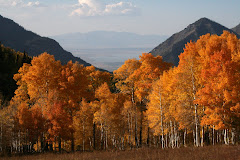They used to say there are no rules in a gunfight. Then somebody, I forget who, said "No, that’s not right. There’s one rule: HAVE A GUN!"
Well, here’s a news story from Bexar County, Texas where two men got into an argument, and one man left in a huff, but soon returned, with a rifle, and started shooting at the other man’s house.
Taking umbrage at the affront, the other man came out of the house and returned fire with a handgun. Now he’s in the hospital in critical condition. The rifleman is still at large. Police expect to make an arrest soon.
Apparently there’s a codicil to the one rule: Have a gun that’s as big as if not bigger than the other guy’s. Hand gun vs. high powered rifle is not exactly an even match-up. The problem is not the size of the hole but the disparity in effective range.
The news report doesn't mention alcohol or drugs being involved in this altercation, but clearly there wasn't a lot of cerebral activity taking place in this incident.
Not a really surprising outcome, really.
Friday, October 5, 2007
NASA Report: Arctic Ice Melt Resulted From Natural Causes; Anthropormorphic Climate Change Not Mentioned. Media Yawns, Ignores Report.
photo by Jimmy Harbeck
NASA has published a report detailing results of a study indicating the reason for the remarkable Arctic ice melt in recent years is probably due to natural causes. Conspicuous in it’s absence is any mention of Anthropomorphic Climate Change®.
Also conspicuous in it’s absence is any mainstream media coverage of the report.
Also conspicuous in it’s absence is any mainstream media coverage of the report.
A team led by Son Nghiem of NASA's Jet Propulsion Laboratory, Pasadena, Calif., studied trends in Arctic perennial ice cover by combining data from NASA's Quick Scatterometer (QuikScat) satellite with a computing model based on observations of sea ice drift from the International Arctic Buoy Programme. QuikScat can identify and map different classes of sea ice, including older, thicker perennial ice and younger, thinner seasonal ice.
Between winter 2005 and winter 2007, the perennial ice shrunk by an area the size of Texas and California combined.
Nghiem said the rapid decline in winter perennial ice the past two years was caused by unusual winds. "Unusual atmospheric conditions set up wind patterns that compressed the sea ice, loaded it into the Transpolar Drift Stream and then sped its flow out of the Arctic," he said. When that sea ice reached lower latitudes, it rapidly melted in the warmer waters.
"The winds causing this trend in ice reduction were set up by an unusual pattern of atmospheric pressure that began at the beginning of this century," Nghiem said.
Naturally, since this study doesn’t fit the narrative, neither you nor I have seen any mention of this reported in the mainstream media. It’s worth reading the whole thing. And thanks to Newsbusters for the link.
Subscribe to:
Comments (Atom)







